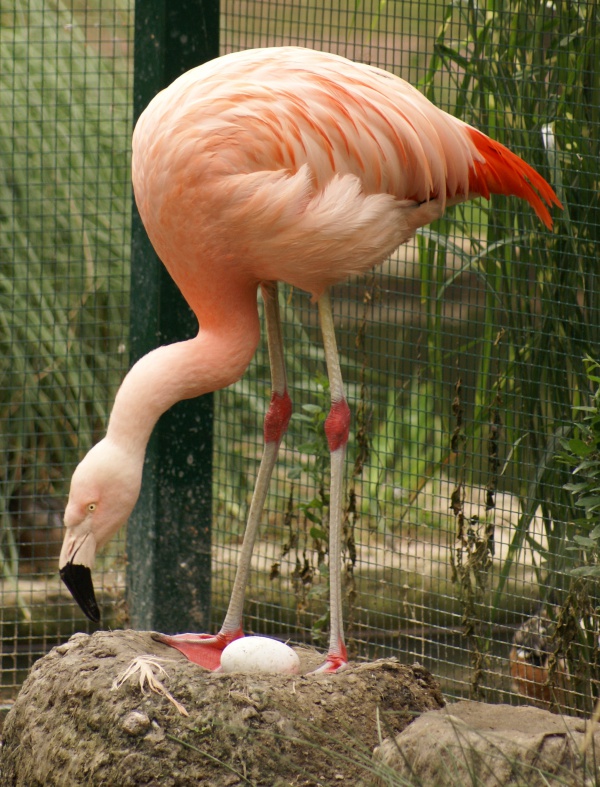Facts About Chilean flamingo
The Chilean flamingo is a striking bird, closely related to the American and greater flamingos. Standing tall at about 110-130 cm, these birds were once considered the same species as their flamingo relatives. Unfortunately, the Chilean flamingo is currently listed as near threatened by the IUCN.
These flamingos reside across South America, from Ecuador and Peru down to Chile, Argentina, and Brazil. Interestingly, they have also been introduced to Germany and the Netherlands. During the breeding season, they lay a single chalky-white egg on a mud mound.
In terms of appearance, the Chilean flamingo boasts a pink hue that is more vibrant than the greater flamingo but not quite as vivid as the Caribbean flamingo. They have grayish legs with distinctive pink joints and a notable amount of black on their bills. Young flamingos start off gray and gradually turn pink as they mature. Their diet mainly consists of algae and plankton, which they filter from the water using comb-like structures in their bills. They are often found feeding in coastal mudflats, estuaries, lagoons, and salt lakes.
In the wild, these flamingos live in large flocks, and they need the activity of the crowd to encourage breeding. During the breeding season, both males and females perform elaborate displays to attract mates. Once paired, they collaborate to build a mud nest, incubate their egg, and feed their chick a special milk-like substance. The chicks begin life gray and gradually attain their pink coloration over the course of 2-3 years.
Zoos have played a significant role in breeding Chilean flamingos to help counteract their decline in the wild. One famous flamingo named Pink Floyd escaped from captivity in the U.S. and became a local legend as he roamed between Utah, Idaho, and Montana. Sadly, Pink Floyd disappeared in 2005 and was presumed dead.
Conservation efforts, including zoo breeding programs, are vital for the survival of the Chilean flamingo. These beautiful birds face threats such as habitat loss and water pollution, making it all the more important to protect and preserve them.

 Peru
Peru